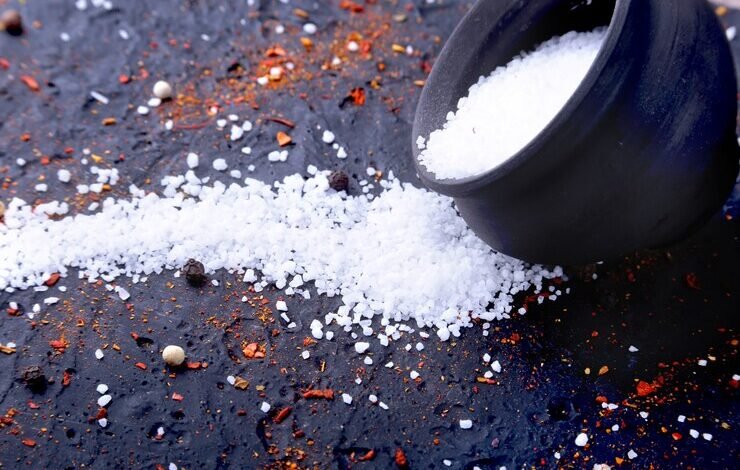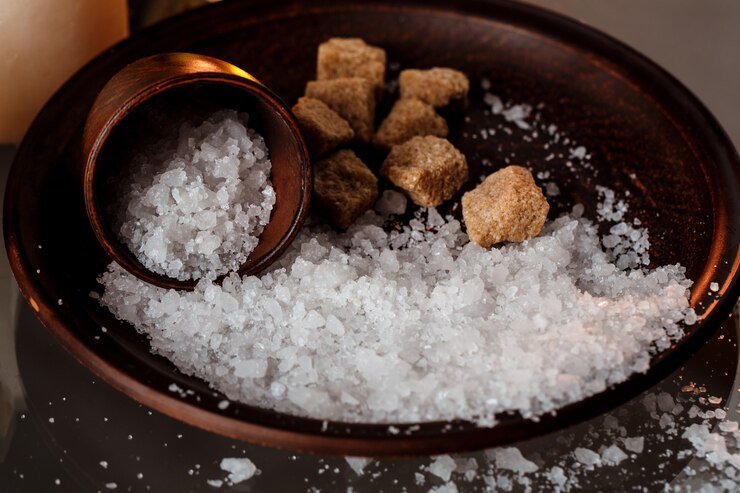The Mighty Sodium Carbonate Unveiled

Introduction to Sodium Carbonate
Ever wondered what goes into making your glassware sparkle or your clothes look crisp and clean? The answer is often a mighty compound known as sodium carbonate. Also called soda ash or washing soda, this white, odorless powder is a staple in many households and industries. But what exactly is sodium carbonate, and why is it so important?
Sodium carbonate (Na₂CO₃) is a sodium salt of carbonic acid, consisting of two sodium atoms, one carbon atom, and three oxygen atoms. This simple yet versatile chemical can be produced through natural processes or synthesized in laboratories. Its alkaline properties make it highly effective for a variety of uses, from neutralizing acids to acting as a water softener.
In this blog post, we’ll explore the multifaceted world of sodium carbonate. We’ll look at its environmental impact, its numerous applications, and its role in our daily lives. By the end of this read, you’ll have a newfound appreciation for this unassuming yet powerful compound.
The Environmental Impact of Sodium Carbonate
Like any chemical, sodium carbonate has its pros and cons when it comes to the environment. Understanding its impact can help us make more informed choices about its use and production.
The Carbon Footprint
Producing sodium carbonate isn’t without its environmental toll. Traditional methods like the Solvay process involve the use of limestone and salt brine, which release carbon dioxide (CO₂) as a byproduct. CO₂ is a greenhouse gas that contributes to global warming, making it essential to consider more sustainable production methods.
Sustainable Production Methods
Fortunately, there are greener ways to produce sodium carbonate. For instance, some companies are now turning to trona ore—a naturally occurring mineral that can be processed into soda ash with a significantly lower carbon footprint. Additionally, research into renewable energy sources for production plants is ongoing, offering hope for even more sustainable practices.
Waste Management and Recycling
The byproducts of sodium carbonate production also need to be managed responsibly. Techniques like carbon capture and storage (CCS) can help mitigate CO₂ emissions. Furthermore, recycling sodium carbonate from industrial waste streams is becoming increasingly viable, thus reducing the need for virgin material and minimizing environmental harm.
Applications and Industries
Sodium carbonate is a real workhorse in various sectors. Its versatility and effectiveness make it indispensable in numerous applications.
Household Cleaning
One of the most common uses of sodium carbonate is in household cleaning products. Its alkaline nature helps break down grease and grime, making it an effective ingredient in detergents, surface cleaners, and even toothpaste. A little sprinkling of washing soda in laundry loads can enhance the cleaning power of your detergent, leaving clothes fresh and bright.
Glass Manufacturing
The glass industry heavily relies on sodium carbonate. It acts as a flux, lowering the melting point of silica (the main component of glass). This not only saves energy but also improves the workability of the molten glass. Whether it’s windows, bottles, or art pieces, sodium carbonate plays a crucial role in making them all.

Paper Production
In the paper industry, sodium carbonate is used to extract lignin from wood pulp, thus facilitating the production of paper. Its alkaline properties help in the pulping process and also aid in neutralizing acids that could degrade the quality of the paper over time.
The Role of Sodium Carbonate in Health and Everyday Life
Beyond industrial applications, sodium carbonate has significant roles in healthcare and daily living.
Healthcare Applications
Sodium carbonate finds use in the medical field as well. It’s often employed as an antacid to relieve symptoms of heartburn and indigestion. Its alkaline properties help neutralize stomach acid, providing quick relief. Additionally, it’s used in dialysis solutions for patients with kidney failure, highlighting its importance in critical healthcare scenarios.
Food Production
Believe it or not, sodium carbonate also has a place in your kitchen. It’s a common leavening agent in baking, helping bread and pastries rise. In some cultures, it’s used to tenderize meats or even in the preparation of traditional dishes like ramen noodles, where it gives the noodles their characteristic chewiness.
Everyday Products
From pool maintenance chemicals to water softeners, sodium carbonate is a hidden hero in many everyday products. Its ability to balance pH levels and soften water makes it invaluable for maintaining hygiene and comfort in our daily routines.
Sustainable Alternatives to Sodium Carbonate
While sodium carbonate is incredibly useful, it’s essential to explore sustainable alternatives and innovative uses to minimize environmental impact.
Emerging Alternatives
One promising alternative is sodium bicarbonate (baking soda), which can often serve similar purposes with a lower environmental cost. Another option is potassium carbonate, which is less harmful to aquatic life and offers similar benefits in industrial applications.
Innovative Uses
Researchers are continually exploring new ways to use sodium carbonate more sustainably. For example, some innovations involve using it in carbon capture technologies to trap CO₂ emissions from power plants. These captured emissions can then be converted into useful products, closing the loop on waste and creating a circular economy.
Community and Education
Educating communities about the responsible use and disposal of sodium carbonate is crucial. By raising awareness and promoting sustainable practices, we can collectively reduce the environmental impact of this versatile compound.
Conclusion
Sodium carbonate is more than just a cleaning agent or industrial staple. It’s a versatile compound with a wide range of applications that touch various aspects of our lives. However, like any chemical, its use comes with environmental considerations that we must address responsibly.



